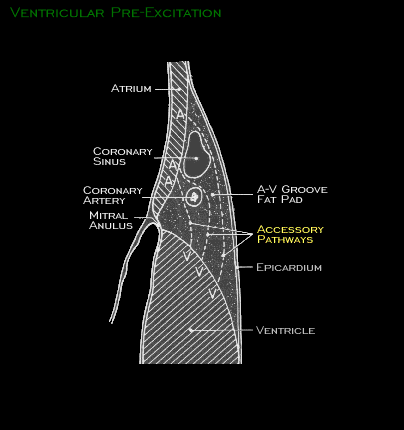
A unique type of intraventricular conduction disturbance is that which occurs when the ventricles are excited by a supraventricular impulse that reaches the ventricle via an AV nodal bypass tract. These bypass tracts, also referred to as accessory atrio-ventricular pathways were originally described in 1914 by Albert Kent, a British physiologist and now carry the eponym “Bundle of Kent” or “Kent Bundle”. They are composed of strands of modified cardiac muscle that conduct more rapidly than AV nodal fibers and are located at various sites around the fibrous atrio-ventricular ring. Such accessory pathways are estimated to be present in roughly 0.15 - 0.20 % of the general population.
